Introduction
"The best iPhone ever made". Words you hear every year. And this iconic title falls to the iPhone 15 Pro Max in 2023. If you must have the best one - this is it. And you've probably pre-ordered it, and this review is now over. But if you need to know if this iPhone is worth the hype, we shall get down to business and put the iPhone 15 Pro Max through its paces.
Titanium is the latest Apple buzzword. The maker has switched from stainless steel to titanium chassis on the 15 Pro models so it can make them even more premium, tougher, and yet - lighter. This is the first thing you will see, and this is how the iPhone 15 Pro series will go down in history.

There are more important new features, of course. The new Apple A17 Pro chip sounds quite impressive with its improved processor and a brand-new console-grade GPU with raytracing. The long overdue switch to USB-C has finally happened, coming with support for USB 3 speeds at that. Oh, and the main 48MP camera has been improved to shoot at 24MP and to offer additional focal lengths (28mm and 35mm).
The highlight feature for the non-gamers is probably the new telephoto camera with a special tetraprism periscope for 5x optical zoom. Apple has innovated the design, allowing this type of lens to let more light through and offer more advanced stabilization.
Apple has retired the silencer on the Pro models, replaced by a configurable Action key, which can still be a silencer if you want that.

The rest of the iPhone 15 Pro Max has been lifted from the 14 Pro Max - a 6.7-inch Super Retina XDR OLED with 120Hz refresh rate, Dolby Vision support and Dynamic Island cutout. The Ceramic Sheild panels are here to stay. And so are the powerful stereo speakers. The 12MP ultrawide camera with macro focus, the 3D LiDAR scanner, and the 12MP AF selfie are all returning, too.
The largest iPhone is jam-packed with connectivity features, of course. There is dual-SIM 5G support via a second eSIM card, NFC, Wi-Fi 6e, Ultra Wideband 2, Crash detection and emergency SOS messages.
Of course, most of the iPhone magic, for better or worse, is courtesy of iOS, now in its 17th version. And the iPhone 15 Pro Max, just like any other model, is going to get at least five years of guaranteed iOS updates, often more.
Apple iPhone 15 Pro Max specs at a glance:
- Body: 159.9x76.7x8.3mm, 221g; Glass front (Corning-made glass), glass back (Corning-made glass), titanium frame (grade 5); IP68 dust/water resistant (up to 6m for 30 min), Apple Pay (Visa, MasterCard, AMEX certified).
- Display: 6.70" LTPO Super Retina XDR OLED, 120Hz, HDR10, Dolby Vision, 1000 nits (typ), 2000 nits (HBM), 1290x2796px resolution, 19.51:9 aspect ratio, 460ppi; Always-On display.
- Chipset: Apple A17 Pro (3 nm): Hexa-core (2x3.78 GHz + 4); Apple GPU (6-core graphics).
- Memory: 256GB 8GB RAM, 512GB 8GB RAM, 1TB 8GB RAM; NVMe.
- OS/Software: iOS 17.
- Rear camera: Wide (main): 48 MP, f/1.8, 24mm, 1/1.28", 1.22µm, dual pixel PDAF, sensor-shift OIS; Telephoto: 12 MP, f/2.8, 120mm, 1.12µm, dual pixel PDAF, 3D sensor-shift OIS, 5x optical zoom; Ultra wide angle: 12 MP, f/2.2, 13mm, 120˚, 1/2.55", 1.4µm, dual pixel PDAF; Depth: TOF 3D LiDAR scanner.
- Front camera: Wide (main): 12 MP, f/1.9, 23mm, 1/3.6", PDAF, OIS; Depth: SL 3D.
- Video capture: Rear camera: 4K@24/25/30/60fps, 1080p@25/30/60/120/240fps, 10-bit HDR, Dolby Vision HDR (up to 60fps), ProRes, Cinematic mode (4K@24/30fps), 3D (spatial) video, stereo sound rec; Front camera: 4K@24/25/30/60fps, 1080p@25/30/60/120fps, gyro-EIS.
- Battery: 4441mAh; Wired, 50% in 30 min (advertised), 15W wireless (MagSafe), 7.5W wireless (Qi), Reverse wired.
- Connectivity: 5G; eSIM; Dual SIM; Wi-Fi 6e; BT 5.3; NFC.
- Misc: Face ID, accelerometer, gyro, proximity, compass, barometer; stereo speakers; Ultra Wideband 2 (UWB) support, Emergency SOS via satellite (SMS sending/receiving).
With USB-C you can now plug in any compatible device and use it right away. Phones, hard drives, headphones, external camera accessories, HDMI cables, or maybe attach a wired input device. Most of the modern peripherals use USB-C connection, and now the new iPhones have it.
Without further ado, here is the iPhone 15 Pro Max.
Unboxing the Apple iPhone 15 Pro Max
The new iPhone 15 Pro Max arrives in one of these thin retail boxes that contain the phone itself and a USB cable. There is also a small paper compartment with some paperwork, one Apple logo sticker, and a SIM ejection tool.

The new USB cable (C-C) now has braided shielding, which should prolong its lifespan a lot. Finally! It is a USB 2.0 cable, though, if you were wondering.
Design, build quality, handling
Oh, it is so...titanium. Said nobody ever. Until Apple made a big thing about that. Indeed, the new iPhone 15 Pro and Pro Max replace the stainless-steel frames with aerospace-grade titanium, which are lighter, tougher, and corrosion-resistant. The new frames now feature a matte finish instead of the jewelry-like glossy look from the previous models.

The new iPhone 15 Pro Max is 20 grams lighter than the 14 Pro Max, and you can feel it immediately. This is a welcome improvement, as the 14 Pro Max always felt a notch heavier than what we consider normal and pocket-friendly.
 New Max vs. old Max
New Max vs. old Max
Another frame change is the barely visible but definitely feelable rounded chamfers. With this subtle design improvement, the new 15 Pro Max feels even thinner and more natural in hand. The matte finish improves the grip, too, and now we can safely hold and play with the iPhone 15 Pro Max almost carefree.
And for those who had their week-old beard pinched between the steel frame and the glass - that is a thing of the past now.
The iPhone 15 Pro Max is still IP68-rated for dust and water resistance with a promised endurance of 30 minutes in 6m deep water - the best among the non-rugged smartphones. The Ceramic Sheild, the toughest smartphone glass, is here to stay as well.

The back panel has no changes - it is as matte as before, made by Corning, and still not a Ceramic Shield one. You can get the iPhone 15 Pro Max in Black Titanium, White Titanium (pictured), Blue Titanium, and Natural Titanium (pictured). They are all quite subdued colors but still likable.
Other Apple specifics like the Dynamic Island cutout and the trigonally arranged rear camera are here to stay for yet another generation. Before we move to a closer look and inspect the new things like the Action button, we want to share a couple of observations with you.
First, the new iPhone 15 Pro Max is all but a premium feeling when compared to the iPhone 14 Pro Max. This year, Apple has made the Pro feel like the non-Pro. The expensive model feels cheap (by Apple's standards). The "oh-so-titanium" is, in fact, "oh, aluminum". Thanks to the new material, chamfers and finish, the iPhone 15 Pro Max looks and feels identical to the iPhone 14/15 Plus. And that is something core Apple fans may find hard to swallow.
 Plus and Max
Plus and Max
And second, it's not only the exterior that has suffered a downgrade, albeit the more premium titanium frame. The internal chassis now has more aluminum than steel, as per the various teardowns, and the new rounded chamfers might be weak design points.
 USB-C and Lightning
USB-C and Lightning
See, the numerous drop tests on YouTube are unanimous - the iPhone 15 Pro Max glass panels, especially the back one, break far easier than on the previous model. In fact, one drop from a short distance can destroy the back immediately. And while the iPhone 14 Pro Max could have survived very well a dozen drops in its lifespan, just one could be the 15 Pro Max undoing. And that is a huge bummer!

On a positive note, the teardowns have also revealed that the 15 Pro Max is easier to repair than the 14 Pro Max. But then again, with every component requiring Apple's digital signature to work properly, this is pointless. Here is hoping the EU gives another long-awaited nudge and stops Apple from getting in the way of third-party repairs.
And now, let's look at the iPhone 15 Pro Max up close.
The front is home to the marvelous 6.7-inch Super Retina XDR OLED rounder corners and two perforations that unite to become the Dynamic Island eyesore, sorry, feature. The screen is indeed among the best on the market as far as quality, colors, contrast, brightness, and viewing angles are concerned. And its bezels are thin and even.
 New Max vs. old Max
New Max vs. old Max
The pill-shaped cutout is unavoidable. It contains the 12MP OIS selfie camera with AF and the 3D scanner for the secure Face Unlock feature. One of the ambient light sensors is behind the display, while the other is next to the cameras around the back.

A similar thing is valid for the speakers - one is above the display behind a barely visible grille-free outlet, while the other one is mounted at the bottom.
There is no Touch ID on the Series 15 of the iPhones.
We do admit the Dynamic Island animations and multi-tasking features are super neat and only Apple can transform a huge eyesore into a cool feature. And we do confess - we use its multi-tasking capabilities daily, and they are convenient.
Now let's talk about the back. It is covered with matte glass with a mirror-like Apple logo.

The square camera housing seems the same as last year's. It contains three metal rings, jutting out of its surface, and each of those packs a camera - a 48MP primary, a 12MP ultrawide, and a 12MP 5x periscope telephoto.
You can also spot the dual-LED dual-tone flash, the LiDAR scanner, an ambient light sensor, and one rear-facing microphone - all flush with the camera housing.

You bet the iPhone wobbles a whole lot if used on a flat desk without a case. And those camera lenses will scratch any glass they come in contact with.
The iPhone 15 Pro Max supports MagSafe for wireless charging and accessory attachment. The magnets are quite strong, and the MagSafe wallets, cases, chargers, stands, and whatnot have become quite popular accessories in recent years. Once considered a pure gimmick, MagSafe has become a strong lineup of accessories.

Finally, let's talk about the titanium frame. It is grippy, fingerprint-resistant and pleasant to touch.

The bottom contains the new USB-C port surrounded by two dotted grilles - one for the primary microphone and one for the second stereo speaker.

The long Side key is alone on the right - it is used for Lock/Wake up, power on, Apple Pay, and also participates in taking screenshots and powering off, restarting or emergency menu activation.

Finally, the left side of the iPhone 15 Pro Max houses the SIM tray, the two volume keys and the new Action key, which is like a 50% smaller version of one of these buttons. This new Action key replaces the old Mute switch.

The Action key triggers on/off when you long press it. There are a few predefined actions - silencer, torch, magnifier, camera shortcut, Focus, Voice Memo, Shortcut, and No Action. The Shortcut option allows you to assign any configuration you've set up within the shortcut app and opens thousands of possibilities.

The Action key is supposed to be used more than the Mute switch, and we are wondering if its original position is the best one for that purpose. We guess only time will tell, but it didn't feel easy to adjust your handhold and reach for it regularly throughout the day.
The Apple iPhone 15 Pro Max measures 159.9 x 76.7 x 8.3 mm and weighs 221 grams - about the same size as the iPhone 14 Pro Max but 20 grams lighter.
The 15 Pro Max feels solid and secure when handled; its design is as premium as it can get these days, even if you cannot really show the titanium. It's the same look and feel as the iPhone 15/Plus, even if the build is different, and Apple has essentially eliminated one of the few key differences between the two versions.

We think the iPhone 15 Pro Max deserves an A(-) for its design and build. Even if the new frame doesn't feel very Pro-like, it is still a carefully crafted device with meticulous attention to detail, and you can tell it every step of the way. The minus here is for the easier-to-break rear glass, which is unfortunate.
Your favorite Retina OLED
The iPhones are known for their bright and color-accurate OLEDs with gigantic notches. And the iPhone 15 Pro Max does bring one of those, in fact, it lifts it straight from the 14 Pro Max. Yes, we are talking about the 6.7-inch LTPO Super Retina XDR OLED of 1,290 x 2,796 pixels or 460ppi density.
The screen supports ProMotion, the fancy naming for the dynamic 120Hz refresh rate, which means that the screen is able to go down to 1Hz for the Always-On and Standby features.

The iPhone's display also supports a wide color gamut, HDR10 and Dolby Vision video standards. The panel has the Dynamic Island pill-shaped cutout. It is protected by Corning's Ceramic Shield, which appears to have an oleophobic coating for enhanced smudge resistance.
Quite expectedly, the iPhone 15 Pro Max display supports True Tone adjustments, and it has the Haptic Touch feature provided by a powerful Taptic Engine.
We've completed our brightness test, and our measurements are in line with the iPhone 14 Pro Max's.
Apple has listed 1,000nits of maximum brightness in regular use with a boost to 2,000nits in bright outdoor conditions. The peak HDR brightness is listed as 1,600nits, which is weirdly lower than the outdoor one.
Just like on the iPhone 14 Pro Max, we couldn't exactly match Apple's maximum numbers, but this doesn't mean the measurements weren't impressive.
We captured 846nits of maximum manual brightness, which is great, and not many phones allow such high brightness for prolonged times. The maximum outdoor brightness we could measure was 1,787nits, which is pretty impressive.
The minimum brightness is incredibly low at 1.9 nits.
Color accuracy
The iPhone has no color settings; its displays are carefully calibrated while the phone is still in the factory.
In terms of color accuracy, the iPhone 15 Pro Max targets the sRGB color space in most apps, including the one we use for testing purposes. And just like all other iPhones panels, this one has an outstanding color calibration out of the box. It remains color accurate even at the lowest possible brightness.
Refresh rate
In a typical Apple fashion, you have no control over the refresh rate. It is a dynamic one, and it should drop down to 1Hz for static pictures and always-on/standby modes. Just like last year, web pages may scroll at a smooth 120Hz refresh rate, but any moving embedded content will be rendered at 60fps.
All benchmarks were capped at 60Hz, meaning there is no high frame rate support right out of the box, and it is up to the developer to unlock it. There are numerous HFR games in the App Store, though, so you can squeeze the maximum of this new GPU.
Streaming and HDR
The iPhone 15 Pro Max display is certified for both HDR10 and Dolby Vision support. The iPhone has all the necessary DRM certifications, as you would expect, allowing third-party services like Netflix or YouTube to offer HDR streams.
There is one more thing worth mentioning - Apple does its HDR video playback in a very flexible way since it's not necessary for the content to be displayed full-screen for HDR to work. It can just work on the portion of the display that has the video playing, which is a bit of a surreal experience the first time you encounter it.
Haptic feedback
There are a handful of smartphones that deserve praise for their haptics, and the iPhones are in this exclusive club. The Taptic engine provides accurate and pleasant feedback, and we loved it.
Battery life
The Apple iPhone 15 Pro Max is powered by a 4,441mAh battery, a minor increase over the 14 Pro Max cell (about 2-3%).
Apple likes to advertise the Plus model as the best one for battery purposes, but the LTPO OLED on the 15 Pro Max coupled with the new 3nm chipset should offer an even better one. And while we are still testing the battery life on the Plus model, we do have the numbers for the Pro Max, and they are excellent.
The iPhone 15 Pro Max scored a total endurance rating of 118 hours. It did great on our call test, lasting 25 hours, and it did exceptionally on the screen-on tests, scoring north of 24 hours on both the web and video playback tests.
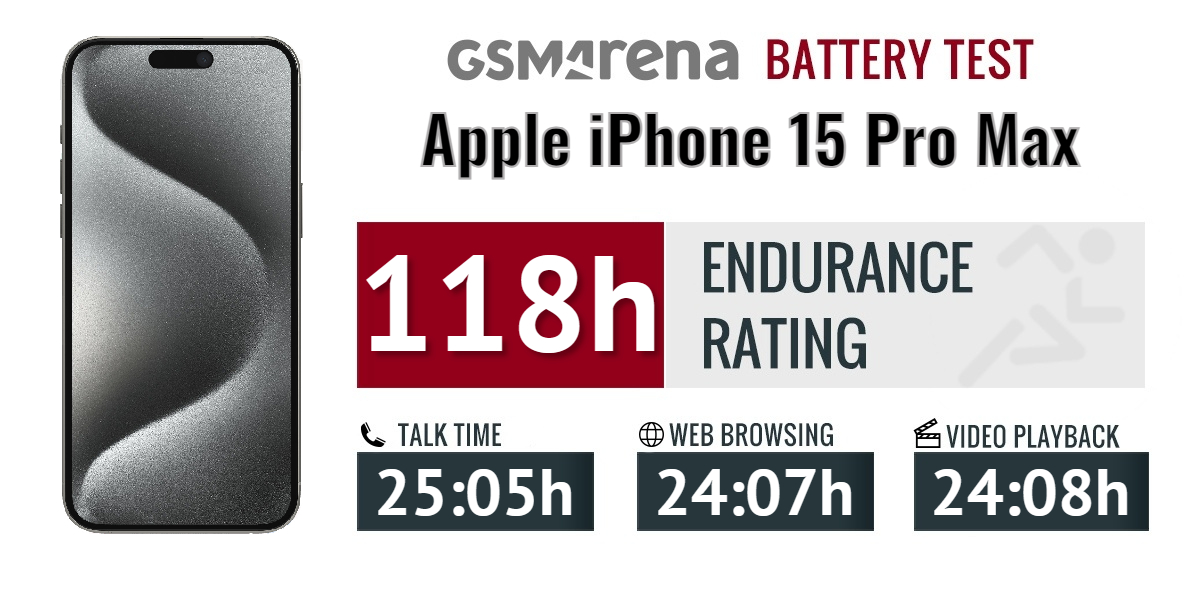
The endurance rating denotes how long the battery charge will last you if you use the device for an hour of telephony, web browsing, and video playback daily. More details can be found here.
The scores are in line with the iPhone 14 Pro Max.
Video test carried out in 60Hz refresh rate mode. Web browsing test done at the display's highest refresh rate whenever possible. Refer to the respective reviews for specifics. To adjust the endurance rating formula to match your own usage patterns check out our all-time battery test results chart where you can also find all phones we've tested.
Charging speed
The iPhone's retail bundle contains no charger. All recent iPhones support fast wired charging via USB Power Delivery and fast wireless charging with the MagSafe-certified chargers.

According to Apple's official specs the iPhones, the 15 Pro Max included, support up to 20W wired and up to 15W wireless charging. Apple is advertising all iPhones, no matter what their battery capacity is, to recharge about 50% in 30 minutes with its 20W adapter.
We have completed our charging test with Apple's original 20W power adapter, and the times are a match to the 14 Pro Max. The iPhone 15 Pro Max recharged up to 23% in 15 mins, 46% in 30 mins and 80% in 60 minutes.
You can get somewhat faster charging if you get a 30W charger, as in this case, the iPhone 15 Pro Max will charge with up to 25W of power.
A full charge with the 20W charger required 1 hour and 49 minutes and it's about the same even with a faster charger. Typically for Apple, topping up the last 5% took about half an hour. And do bear in mind that we carried out this test without Optimized Charging, which would slow down the last few percent points even further.
If you want to get the maximum longevity out of your iPhone's battery, the Optimized Battery Charging option in Battery settings should help. It allows the iPhone to adapt its charging curves to your charging patterns (mostly related to overnight charging and your sleep routine), so it minimizes the time the battery spends at 100%. It will charge quickly (well, iPhone-quickly) up to 80% and will then only finish things off just before it thinks you're going to need the phone. Upon reaching 100%, the phone stops using the charger, and no electricity goes in.
The new iPhones support one new Battery Health option, which should prolong its lifespan even more - it is 80% Limit. This will make the iPhone charge 80% and never go up. This way, you can fast charge however and whenever you like, and your battery will stay healthier thanks to the lower cycle count.
The iPhone 15 Pro Max supports wireless charging up to 7.5W with generic Qi-compliant charging pads. Apple would prefer you to use their MagSafe magnetically attached accessory, which should max out at 15W.
Reverse wired charging is available - the iPhone will detect the device with more battery juice and determine whether it needs to act as a power bank or as a charge receiver. The reverse charging power ranges from 4-4.8W, and if you connect something like AirPods or Apple Watch, it charges them with 2W of power.
Speakers
The iPhone 15 Pro Max has no advancement in the speaker department. It uses the same hybrid stereo speaker system we've experienced in previous generations. There is a dedicated speaker at the bottom of the phone, while the earpiece acts as a second speaker.

Both speakers are quite loud with similar sound quality. And the sound from them is nicely balanced.
Apple has assigned speaker roles for when they are playing in portrait orientation - the top speaker serves as the right channel, while in landscape orientation, the output is adjusted to match the phone's orientation. In any case, each speaker will still output some of the 'opposite' channel, but at a much lower volume.
The iPhone 15 Pro Max has the same speaker system like on the 14 Pro Max, and it is not surprising it offers a Very Good loudness (a hair shy of Excellent), and an impressively rich sound output across the board - bass, vocals, treble.
Use the Playback controls to listen to the phone sample recordings (best use headphones). We measure the average loudness of the speakers in LUFS. A lower absolute value means a louder sound. A look at the frequency response chart will tell you how far off the ideal "0db" flat line is the reproduction of the bass, treble, and mid frequencies. You can add more phones to compare how they differ. The scores and ratings are not comparable with our older loudspeaker test. Learn more about how we test here.
Apple iOS 17
All new iPhones come with Apple's iOS 17 out of the box. The new iOS version is the most insignificant update ever, no matter what Apple may try to sell you. It brings a new Standby mode, highly customizable Contact Posters, Password sharing with friends, offline maps in Maps, updated Messages with automatic SMS code deletion, and interactive widgets, among a few others.
Let's take a closer look at the iPhone 15 Pro Max's iOS 17 now. Its interface is still based on homescreens populated with apps and widgets, App Library for your less important apps, and Notification and Control Centers.

The lockscreen on iOS 17 follows a familiar logic - it's one with the Notification Center and houses your notifications, plus shortcuts for the torch and the camera. The Always-on option is available on the iPhone 14 Pro or later, and you can opt out of the wallpaper if you prefer.

There is now a new optional Standby mode, which activates during charging when the phone is put into landscape orientation. It is sort of a landscape Always-on with a bigger clock and calendar. It can show notifications, too. There is also a Night version with red colors.
You can get past the lockscreen via Face ID or PIN if you've opted for secure unlock.

You can customize your lockscreen by picking from some cool wallpapers and adding a row of widgets (up to four). There can't be more than one row of widgets. The neat thing is that you can build a couple of different lockscreens and switch them on the go (tap and hold, then swipe). This way, you can easily change the look of the homescreen/notification center depending on your mood or situational context.
You can also pair your homescreen look with the lockscreen and change both in one go.
The Action key triggers on/off when you long press it. There are a few predefined actions - silencer, torch, magnifier, camera shortcut, Focus, Voice Memo, Shortcut, and No Action. The Shortcut option allows you to assign any configuration you've set up within the shortcut app and opens thousands of possibilities.
Your apps usually populate the homescreen(s) and widgets. There are two specific screens - the leftmost is the Today page, while the rightmost page - App Library.
You can hide specific homescreens - you may have a page that's full of games and hide it when at work or hide a page of work/school apps when on vacation. You can't opt out of Today and App Library, though.






Lockscreen • Homescreen • Today • App Library • Hide homescreens • Task switcher
The Focus functionality is here to stay - you can assign a Focus mode on each lockscreen preset you create. And in addition to all other ways of switching between Focuses, now switching between lockscreens also changes the Focus mode.
There are different Focus modes like Work, Personal, Driving, Gaming, and Do Not Disturb, among others, highly customizable at that. And you can create and automate your own, of course.
Widgets can be placed on any of the homescreens and the Today page, and they can coexist with app icons. There are three widget sizes supported by iOS - 2x2, 4x2, and 4x4. You can stack widgets of the same size on top of one another, and, optionally, they can rotate automatically.






Widgets • Widgets • Widgets • Stacked Widgets
The widgets are now interactive - you can tap on some of them and change things without going into the app. For example, if you have a Home widget, you can turn on/off devices straight from the widget.

The App Library is an app drawer, which is always your rightmost homescreen pane. Apps are added automatically to the App Library upon installation. The sorting is also an automatic process, and you can't edit the categories or move apps in different categories. The app sorting depends on the App Store tags the developer has used upon uploading the apps.
The Today page is still alive. You can put the same widgets and stacks you can on your homescreens. Here, you can also use the old third-party widgets that still need to be optimized for newer iOS versions. The old widgets come right after the new ones, should you choose to use some new ones, of course. It's a pity this Today page cannot be disabled, as we found it mostly useless.
The Notification Center is summoned with a swipe from the left horn or the pill itself. The pane was unified with the lockscreen in iOS 11, and that's why you can have different wallpapers on your homescreen and notification center.
The Control Center, which has customizable and (some) expandable toggles, is called with a swipe from the right horn. You can use tap and hold on any element to access additional controls. And the battery percentage is also here.





Today • Today settings • Notification Center • Notifications • Control Center
The Task Switcher hasn't seen any updates - you see app cards and swipe them for closure. You can also swipe on the gesture line for quick switching between apps.
The Dynamic Island allows for more convenient multi-tasking. This is what Apple calls the i-shaped cutout and its animations and convenience features. For all intents and purposes, the Dynamic Island is a pill-shaped notch as Apple has blackened the middle part for aesthetic purposes. There you will see the mic and camera indicators and nothing else.
The animations around the island always use a black background. There are three Island modes. Standard form - inactive island or just accommodating camera/mic indicators.
The active form is a longer pill-shaped notch with info on both the left and right side for certain events, alerts, and notifications. This long pill can also split into an i-shaped one if you launch another compatible app that can be minimized here, like the Timer.
There is also a third form that expands into a pop-up balloon - this can be invoked by a tap and hold on the small animation. A tap will open the respective app instead, though. We think these gestures should have been inversed or at least configurable, but as usual - Apple knows best.






Indicators • Dynamic Island • Dynamic Island expansion • Dynamic Island
The Dynamic Island incorporates different things - starting with the Face ID animation, charging animation, music info (Music, Spotify, Amazon, YouTube, Soundcloud), call info (Phone, WhatsApp, Skype, Instagram, Google), timers, etc. If you activate a second app that needs to use the Dynamic Island, you get a sweet animation that shortens the island and adds a small icon on the left side.
The supported system alerts include calls, AirPods and Watch connections, Battery and Charging, Focus changes, AirDrop, Face ID, AirPlay, NFC events, SIM alerts, Silencer on/off.
Let's mention some of the new features.
FaceTime now supports leaving audio and video messages for when you're calling someone and they aren't available.
Messages now has a Check In feature. It takes over the chore of checking-in with family members while traveling. It works like this: once you've initiated a Check-In, a friend or family member will be automatically notified when you've arrived at your destination. If you're not making progress toward the destination, the selected contact will get your device's location, battery level, and cell service status.

Live Voicemail is an interesting new feature. Now, you don't have to pick up when a number you don't recognize is calling - the phone will do that for you and will display the live scrolling text of what the person calling is saying, so you can easily decide if it's worth talking to them. Calls identified as spam by carriers won't appear as Live Voicemail and will instead be instantly declined. The transcription is handled entirely on-device.

There is a new customizable call screen, which Apple calls Contact Posters. You can change how they appear and choose beautiful treatments for photos or Memoji, adding "eye-catching typography" and font colors. These work in third-party apps as well, and they're also used when you want to share contact details with someone through a new feature called NameDrop - it's as easy as tapping your phones together (or an iPhone and an Apple Watch), and the contact cards are swapped.
The multimedia is handled by Apple's default apps - Photos, Music, TV.
The Photos app's library has four different views - Years, Months, Days, and All Photos. AI-powered search options and powerful photo and video edit modes are available, as usual. Visual Lookup is here to stay - you can smart crop an object or copy text from any photo.
The TV app is part of iOS 17, and it is your default video player for locally stored movies and shows you've added via iTunes. This is also the digital store for movies and TV shows, and it is also the place where you find the Apple TV+ streaming service. A bit overwhelming, but you get used to it eventually.
Music is the default player, and it relies heavily on Apple Music. But even if you decide not to use the streaming service, it can still do an excellent job if you have a few minutes to add your songs via iTunes.






Photos • Photos • Photos • TV • Music
Books are here for your documents, PDFs, and eBooks. Stocks and News are onboard. Safari is your default web browser, now upgraded with Face ID for the Private tabs, and Apple Maps is your default map client, which now supports offline maps.






Books • Books • Safari • Safari • Maps
The LiDAR scanner is onboard on the latest Pro models, too. It measures distances by firing laser beams and measuring their reflections with a dedicated sensor. This way, the phone can make a super accurate 3D representation of an object and later place it virtually anywhere. Thinking of new furniture? This will be perfect. Want to compare the size of objects you can't put next to each other - LiDAR will help.
The LiDAR scanner is also very accurate at measuring distances, and you can use it just for that - like a fancy digital tapeline. Or you can set a distance and see virtual walls in real-time at the predefined distance. Professionals such as interior designers may find the LiDAR scanner a handy tool. Thanks to the powerful AR capabilities that also come as a bonus with LiDAR, you can also have an amazing AR experience with compatible apps and games - there are plenty available on the App Store.
All recent iPhone models support Emergency SOS via satellite. This service is text-only and will be used primarily for emergencies, but it does support two-way communication, so you will be notified when rescue is on the way. The Find My app will also be able to share your location with friends so that they can keep an eye on you.




The new satellite messaging service • An emergency questionnaire • Find My reports location over satellite
You can compose custom messages to explain your situation, but when speed is life-saving several specially-prepared questions will let you send out a detailed SOS in just a few taps. The new feature added for this year is Vehicle emergency satellite services. It will require an active roadside assistance subscription, initially with AAA in the US.
In locations with a clear view of the sky, a message can be transmitted in about 15 seconds, but if there are trees overhead, it may take a couple of minutes. iPhone buyers will be getting two years of free satellite services, after which a fee of some kind will be incurred for the feature. Emergency SOS via satellite is available in Australia, Austria, Belgium, Canada, France, Germany, Ireland, Italy, Luxembourg, the Netherlands, New Zealand, Portugal, Spain, Switzerland, the U.K., and the U.S.
Crash Detection is also available on all iPhone 15 models, thanks to a new accelerometer that can detect up to 256G. If such an emergency occurs, the phone will automatically contact emergency services. This is a setting within the Emergency SOS menu called Call After Serious Crash. You can either turn it on or off; there are no other settings.
Finally, let's spend a minute on connectivity.
The new Type-C port on the iPhone 15 Pro and 15 Pro Max is backed up by a USB 3 data connection, which means a theoretical max transfer speed of 10 Gbps. The cable that comes in the box, however, is USB 2.0 only.
The iPhone 15 Pro Max supports video output (Display port DP) via Type-C Alt mode, which means that most standard Type-C hubs with a video interface should be able to get an image from the phone. By default, you get a mirror of the display without any other fancy options like a dedicated desktop mode or anything of the sort. In other words, it does a simple screen mirror for the UI.
Certain apps behave differently, and some, like the Photos app and Netflix, do offer dedicated casting of content to the display in 16:9 aspect ratio. Netflix even does resolution-matching with the content and can output in 4K. Other video apps, like YouTube, however, don't have said behavior and are stuck at 19.5:9 aspect ratio.
There is seemingly no way to control this behavior, not to mention the experience may vary based on the video output adapter you use. Though, the iPhone does offer some display settings when connected to an external display mainly dealing with the selection of HDR or SDR color mode where supported, as well as a toggle for the ability to automatically adapt and match the output resolution to the content being played.

All iPhone 15 models also support USB Host mode, and we successfully hooked up a mouse and keyboard. The keyboard started working instantly, but getting the mouse to pick up and actually show an on-screen cursor required enabling the Assistive Touch option in Settings. USB thumb drives, card readers, and hard drives work fine and automatically mount and appear in the Files app. Compatible external storage is also recognized by the Camera app, and you can output ProRes videos there.
Various USB-C game controller/phone holders are supported, too. Anything that works on Android via USB-C should work on the new iPhones as hassle-free.
Finally, we saw quite a few people asking about the iPhone 15 Pro Max signal reception. We found that on par with the 14 Pro Max - we never lost signal in the city, even when inside all-metal elevator cabins or underground garages. The call quality, even with a single bar of signal, was excellent. We found this iPhone to have better 4G, 5G and Wi-Fi reception than the Sony Xperia 1 V and 5 V, the Huawei Mate 50 Pro, and the Galaxy Z Flip5 and Tecno Phantom V Flip (those were around the reviewer(s) at the time of testing).
Performance, benchmarks, stress tests
The iPhone 15 Pro and Pro Max are powered by Apple's latest invention - the Apple A17 Pro chipset. The Bionic moniker is no more, as this new piece of silicon brings the iPhone models to a whole new level with console-grade graphics and hardware ray tracing acceleration. According to Apple, of course.

The maker has such confidence in its new "console-level" 6-core Apple GPU that it has made sure it has console games soon after launch. Apple has secured Resident Evil Village, Resident Evil 4 Remake, and Assassin's Creed Mirage (the latest AC title!) ports for the iPhone 15 Pro - these will all come in the upcoming months.
There is no denying that these games will be optimized for the new iPhones and will work well. Furthermore, it is quite exciting to see popular recent console titles coming on iOS.
The new Apple A17 Pro chipset is the first ever mass-market SoC manufactured by TSMC 3nm process node, and it contains 19 billion transistors. The A17 Pro still has a 6-core processor with 2 performance cores clocked at 3.78GHz and 4 efficiency cores working at 2.02GHz. Apple claims the performance cores are 10% faster than those in the A16 Bionic and that's easy to believe seeing how their clock speed is 10% faster too.
The GPU is a 6-core unit, which Apple claims is 20% faster than its predecessor in peak performance. The GPU enables hardware-accelerated Ray Tracing, which is supposedly 4 times faster than the software-based Ray Tracing on last year's chip. This means the GPU won't offer that much, if any, performance bump over the last year 5-core GPU, but it will make the raytracing toll on the hardware way lighter (and thus better graphics).
The Neural Engine is a 16-core unit that Apple says is twice as fast as last year's chip for machine learning operations.
The A17 Pro SoC features a Display Engine with hardware AV1 decoding and a ProRes codec. The chip allows the new iPhone 15 Pro models to capture 4k 60fps in ProRes RAW, along with support for the industry standard ACES color profile.
Finally, the new Pro models feature 8GB LPDDR5 RAM. You can opt for 256GB, 512GB and 1TB NVMe storage options.
And now it's benchmark time!
The single-core CPU performance has an obvious increase of 10% over the 14 Pro Max, while the multi-core one is about 6%.
We've got GPU scores from the GFX Benchmark, but they are all over the place. It hasn't been updated since 2020 with support for newer devices, and this could be the reason.
We got 3D Mark scores, though, and this benchmark has been updated more recently on iOS. The GPU inside the A17 Pro shows a minor 10% improvement over the 14 Pro Max and its A16 Bionic GPU on the WildLife Extreme GPU test, but a massive improvement of 60% on the Solar Bay Raytracing test.
The compound AnTuTu 10 test puts the iPhone 15 Pro Max among the best in the world.
So, regarding raw performance, the iPhone 15 Pro is among the fastest phones in the world, and its GPU is surely the fastest, especially regarding ray tracing.
The internet has been boiling with stability concerns over the new A17 Pro chipset, so we did some extensive testing.
Let's start with our usual stress tests - APSI Benchmark and 3D Mark.
When it comes to stability during sustained CPU load, the 15 Pro Max throttled to 78% in the 30 minute APSI Bench continuous CPU test. That's a respectable result. Last year, we got 92% on our 14 Pro Max and iOS 16. This year, we decided to test it again on iOS 17, and we got 76%. Weird!
We ran the test again for another 30 minutes right after it ended, and it returned about 95%, which means the CPU has reached a sustainable level at 78% peak performance and can stay there for as long as it is needed.
Moving on to some GPU testing.
First, we ran our usual 3D Mark Wildlife Stress Test. Here, the iPhone 15 Pro Max scored 70% stability, which is a great one, especially for flagships with passive cooling and glass panels.
We also ran the 3D Mark Solar Bay stress test with ray tracing, where we got about 60% stability.


GPU stress test • GPU stress test with raytracing
Then we did the same thing but ran the tests twice. On the second run of each of those tests, we got another drop, which would bring the total throttling that happened over the span of 40 minutes down to 50%. Note that it did not happen immediately but evenly over time. Eventually, the GPU settled at 50% of its performance, and that appears to be its bottom if no external conditions are involved (such as super-hot weather).
We also played Call of Duty for about 40 minutes without noticing performance drops or hiccups. Same goes for 1 hour of Pokémon Go, though this game is arguably not as demanding. We are sure throttling did occur, but it was not something we could feel.
Lastly, we did read reports of overheating iPhones, some during fast charging. For this review, we used two iPhone 15 Pro Max units, obtained from different retailers, and neither of those became unbearably hot even after an hour of GPU stress testing. Warm, rather unpleasantly (but not concerningly) - sure, but hot - never. We know people have experienced and documented such issues, but we haven't been able to replicate those so far on our units.
And since we ran the same tests on the iPhone 14 Pro Max, which last year we crowned as a phone with excellent stability, we were surprised to see that now, under iOS 17, its stability has gotten worse. That's why we think there is some software issue at play in addition to/or just contributing to the poor heat dissipation.
And one last observation: the iPhone 15 Pro lost about 15% of battery juice during one hour of 3D Mark stress testing, which is quite an admirable result that speaks greatly for its gaming capabilities.
The Apple A17 Pro turned out not to be the big deal Apple claimed it to be, even if it looks to be among the fastest chips in the world. But its ray tracing capabilities seem incredibly promising, and the GPU is surely ahead of the competition.
Just like any other chipset, the A17 throttles its GPU down to 50%, so it can keep the phone from overheating during extensive hour-long GPU stress testing. And this is the longest GPU stress test we've done on a phone ever, so there may be a lot more that get down to 50% performance after a couple of consecutive runs.
While we have not experienced any overheating issues, some people have, and we believe there is some software problem that needs to be taken care of. Here is hoping Apple will fix that soon.
Overall, it's a solid performance from the latest iPhone, but it could be plagued with some issues.
A total of four cameras with a new 5x telephoto
The Apple iPhone 15 Pro Max has a total of four cameras - three on the back and one selfie camera. Each of these setups is further assisted by a LiDAR system (back) and a 3D ToF camera (front). All but the selfie camera have been updated on the new Pro Max model.

Let's explore the camera system on the back. It all starts with the 48MP main camera, which has a bigger sensor with 1.22µm pre-binned pixels and second-generation sensor-shift stabilization. The lens is a 24mm f/1.78.
This camera opens a few imaging possibilities for the iPhone 15 Pros. You can now capture 48MP HEIF/JPG images alongside 48MP ProRAW. The new bigger sensor also allows for 28mm and 35mm digital zoom modes, and the iPhone will let you pick one of these focal lengths as your default setting.
The iPhone 15 Pro Max debuts the first periscope camera on an iPhone. Thanks to the folded optical design, the Pro Max finally zooms past 3x and up to 5x, or 120mm in 35mm equivalent terms. The optical design is unique. Apple calls it a tetraprism, and light gets reflected across four elements before reaching the sensor. The lens itself is an f/2.8, the brightest on a 120mm camera on a phone, as Apple claims, which, granted, is a pretty specific claim. There's optical stabilization, too, where the lens and sensor both move to counteract any camera shake.

The iPhone 15 Pro Max also has an updated 12MP ultrawide camera with a large sensor with 1.4µm pixels and 100% focus pixels, which is coupled with a 13mm f/2.2 lens. Macro photography is supported, of course. This camera has a new anti-reflective coating, improved HDR and better Night Mode.

The selfie camera uses a 12MP 1/3.6" sensor again with a bright f/1.9 aperture on its 23mm lens and supports autofocus. There is also OIS, which is a rare feature on a selfie cam.
Finally, the 9-LED flash from last year is here to stay - it has the LEDs arranged within a 3x3 grid. Each of those can be independently adjusted and fired. It's a true-tone flash with slow sync.
Camera app and features
The viewfinder has stayed mostly intact since iOS 16. You can see outside of the viewfinder thanks to the precise calibration of the three cameras, allowing you to see what will be left outside the frame in real-time.
Apple's image processing includes all legacy features - Smart HDR, Night Mode, and Deep Fusion - and last year's Photonic Engine.

All enhancements, except for Night Mode, are out of the users' control. The Night Mode icon pops up automatically when a low-light scene presents itself, and you will see the seconds suggested next to the Night Mode icon. You can choose longer exposure or altogether disable the Night Mode.
Macro mode is available, too. Enabled by the ultrawide camera's autofocusing capability, it's an option you only get on the recent Pro models.
As usual, all cameras talk to each other, so they already know the correct exposure and tone mapping settings when you switch between them. This applies to both stills and videos.
The camera interface has 0.5x, 1x, 2x, and 5x toggles. The macro toggle appears automatically if you are close enough for such a photo. If you tap on the 1x toggle, you will zoom to 28mm equiv (1.2x), and an extra tap will get you 35mm (1.5x). As we have established, those are crops and upscales from the standard output, but pretty good ones, nevertheless.
You swipe between modes and have a couple of settings you can uncover with an upward swipe - flash, night mode, live photo, photo aspect, exposure compensation, and filters. In video mode, you can change the resolution and frame rate from the viewfinder.
Portrait mode is available on the main, tele and selfie cameras. There is a new Portrait feature on the new iPhones - portrait after the fact. The iPhone will detect when you capture a person, pet, or any subject that could be suitable for a portrait mode and automatically capture a depth map. And if you decide you want to blur the background later - you can do it from the Photos app. Neat! We guess apps like Focos might become obsolete soon.
We also noticed when the camera app was going to capture a depth map, it displayed an F shortcut on the viewfinder in the regular Photo mode. If you use it, you will capture a portrait right away, without going into the Portrait mode.
RAW capture is supported across all cameras, and it can shoot in 48MP for the primary one if you have enabled Resolution and RAW control. This will add a new toggle called JPEG Max.
There is this feature called Photographic Styles, which automatically edits a photo, one element at a time (applying different corrections to the subject and background, for example). You can choose between Standard, Rich Contrast, Vibrant, Warm, and Cool. You can tune each of these modes to your liking and set your preferred one as default. It's like filters but more permanent.
Cinematic Mode is present, as well as Action Mode.
Daylight photo quality
The primary camera on the Apple iPhone 15 Pro Max saves 24MP by default, though options for 12MP and 48MP are also available. The 48MP sensor still uses a Quad-Bayer color filter, which means the 24MP photos the iPhone saves are most probably a product of supersampling and multi-stacking.
The 24MP daylight photos from the main camera are surprisingly good, though typically Apple. Comparing them to the 12MP output we can see there is more detail in pretty much everything - foliage, labels, building decorations, the mountain. But then there is no detail increase on moving objects like cars (and plate numbers). Which means Apple does excellent super sampling, but it is still limited in a way.
Of course, it cannot be anything else as the camera has a 48MP Quad-Bayer sensor. It can crop the center from the 48MP image or supersample the 12MP output. We suspect it is the latter, judging by the contrast and the dynamic range.
Long story short - there is more detail to be seen in the 24MP photos and we think it is worth saving in this default resolution. Plus - the file size difference is about 1MB-1.5MB increase per HEIF image (say from 2.5MB to 3.8MB).
The photos are detailed, and there is no visible noise. The white balance is spot-on, and the color rendition is a 1:1 match to real-life. The contrast is great, while the dynamic range is wide enough.
Apple's image processing has mostly stayed the same for quite a while - the super accurate colors look somewhat anemic and their algorithm still tends to go overboard with the sharpening.
Tip: If the color rendition is not to your liking too, just use one of the extra Photographic Styles - we chose a more saturated one immediately after we were done with the review. This is not a filter you need to select every time, but a color preset that is always used unless you change it.
And here are a few 12MP photos taken with the new iPhone. Those are the usual oily over-sharpened mess the iPhones present as class-leading photos. Well, they are not. We suspect Apple finally understood that, and it solved it with... supersampling. Magic.
Apple dedicated a few moments from its nearly 1-hour iPhone 15 presentation to the new Pro models' custom 28mm and 35mm shooting modes. Technically, you get a cropped 28mm or 35mm portion from the native 24mm primary lens and you get it in the same 24MP resolution as the default 24mm images. Apple says that with the iPhone 15 Pro, "it's like having seven pro lenses in your pocket".
It's a convenient feature for those who prefer a focal length narrower than 24mm. You tap the 1x mode in the camera to go to 28mm (1.2x) and once again to 35mm (1.5x). You can even make either the default camera focal length, which is extra convenient.
We manually cropped from 24mm 24MP shots and upscaled them up to 24MP using Photoshop's Preserve Details 2.0 resampling method. Looking at the results side-by-side, we'd say there isn't a discernible difference between Apple's 28mm shot and our simple crop-and-upscale.
And here are the 28mm samples.
It's the same story with the 35mm images.
The 48MP sensor allows Apple to offer 2x lossless zoom by cropping from the center of the 48MP image. Those are always saved in 12MP, no matter the selected resolution for the main camera.
The 12MP 2x zoomed photos are very good - the detail is enough and it is not over-sharpened, the contrast is high and the dynamic range is wide. The colors are a match to the standard output.
We can see traces of supersampling, which were most obvious in the foliage, but for all intents and purposes - those are solid 2x zoomed photos.












Main camera 2x zoom 48mm, 12MP
Some of our readers asked for 3x zoomed photos, as the difference between 2x and 5x is not that small. And they do have a point.
Unfortunately, the 3x zoomed photos are clearly lacking in detail as the crop and upscaled beyond 2x becomes obvious. There is no Apple "magic" here, just a simple digital zoom.
Finally, let's look at some 48MP photos. Looking through them, we saw detail that was not visible on the 24MP images, which means they could be worth something especially if shot in RAW. They are not that detailed in full resolution, obviously, and heavily over-sharpened.
The new 5x telephoto camera saves very good photos - the resolved detail is plenty, even if not impressive, the noise is low, and the sharpness is just right. The rest of the properties are a match to what the main camera offers - great contrast, realistic dynamic range, and accurate colors.
And here are a few 10x zoomed photos. Those are surely not on S23 Ultra 10x level, but we suspect that Apple does some supersampling here, too, as those photos exhibit more detail than a simple crop and upscale would have offered. So, if needed, the iPhone 15 Pro Max would offer zoomed photos beyond 5x with good quality.
The 12MP photos from the ultrawide shooter are among the better ones we've seen from such a camera, though not the best. They do offer high resolved detail and outstanding corner rendition and sharpness, but their high-frequency detail like foliage is a smeared and over-sharpened hot mess.
Other than that, the ultrawide photos are quite presentable with low noise, high contrast and good dynamic range, as well as accurate colors.
The ultrawide camera also supports dual-pixel autofocus, which comes in handy when you want to shoot macro photos from as close as 3-4cm. As soon as you are really close to a subject, the camera can automatically switch to a macro mode, but it will be with a field of view matching the primary camera. This means that it will crop and then upscale. That's why we prefer to just switch to the UW camera and do it by ourselves.
The macro shots we snapped with the ultrawide camera are excellent - the subject on focus is rendered very well - detailed, sharp, and colorful. The contrast across those photos is great, and the dynamic range is commendably wide. The colors from this up-close are surprisingly lovely.
Selfies
The iPhone 15 Pro Max has the same selfie camera Apple introduced last year - a 12MP sensor with 23mm f/1.9 OIS lens and autofocus. The camera still offers two FoV settings in the viewfinder - the slightly zoomed-in 7MP crop that is equivalent to a 30mm field of view and the full 12MP mode, which has a 23mm equivalent FoV.
If you hold the phone in portrait orientation, selfies are cropped to 7MP to provide a tighter framing but rotate the phone horizontally, and you get more of the scene with the phone automatically switching to the wider 12MP mode. You can also switch between those two modes manually by tapping on the arrows near the shutter button.
The 12MP selfies we shot on the iPhone are superb - the detail is plenty, there is no noise, the colors are lovely and so is the contrast, while the dynamic range is adequate and not over the top.
Apple's processing once again shows its true self as some facial features come out a bit too pronounced by sharpening and micro-contrast enhancement. While we are not fans of the skin-smoothing algorithms used by other brands, Apple seems to be on the exact opposite side of the spectrum, which is not very likeable either.
Portraits
The iPhone 15 Pro Max defaults at 2x portraits, but you also have 1x and 5x options. The simulated 48mm focal length is perfect for such photos, but the native 120mm f/2.8 lens should offer some excellent shots.
Let's start with the default 2x shots. Those are saved in 12MP and appear to be excellent - the accuracy of the subject separation is impressive, the simulated blur is incredibly convincing, the colors are likable, the dynamic range is wide.
It's just that when you zoom at 100%, you will see the person is not that detailed, with mediocre sharpness across the board.






Default 2x zoomed portraits, 12MP
The 1x photos are saved in 24MP and while they offer a wider field of view, they don't offer much more resolved detail. They are still some solid shots and among the better ones we've seen.
Finally, let's check the 5x zoomed portraits. We had to step 1m away to shoot those, and we admit those are not that convenient to take no matter what the scene. Then again, those are simply stunning! Everything is superb here - subject rendition, detail, sharpness, colors, facial features. Same goes for the background and the blur - everything looks impressive. And the global dynamic range and contrast also deserve praising.
The colors are accurate but not that lively, so if you want more saturated one - just set a specific photographic style.
Low-light photo quality
The modus operandi of Apple's Night Mode remains unchanged - it triggers automatically in low-light scenes and usually chooses 1s exposure for the primary camera and 2s-3s for the rest. You can choose a different exposure time or disable the Night Mode. Once disabled, it will stay this way until you enable it or restart the camera app.
The Night Mode shots are always saved in 12MP, and so are the 2x zoomed photos, as we established. The only way to get a 24MP nighttime photo is to disable the Night Mode.
The first set of photos we offer you below were shot on Auto, and for most, the algorithm chose 1s exposure time. Only the first and the last photo were shot without NM.
The (Auto) photos from the primary camera are impressive. The ones shot with Night Mode are slightly brighter than reality, but definitely not over the top. The photos are abundant in detail, there is no noise, the sharpness is top-notch.
The exposure is excellent across the board, the dynamic range is realistic with deeper shadows, and the color presentation and saturations are lively and lovely.
The 24MP photos without Night Mode offer lower contrast and wider dynamic range, more realistic color saturation. There is still plenty of detail, but there is some visible noise, but it doesn't get in the way. Those are some solid nighttime shots, and some might prefer them over the brighter and of nigher contrast Night Mode ones.
The Auto photos we shot at 2x zoom are impressive - they are detailed, in fact, more detailed and sharper than any 2x telephoto camera will offer you nowadays. They are noise-free, the contrast is high, the dynamic range (deeper shadows some but not many blown highlights), and the colors are superb.








Main camera 2x zoom Auto, 12MP
You can get a wider dynamic range, more realistic look, and colors for the 2x zoomed photos if you opt out of the Night Mode. But this will lower the resolved detail and the sharpness.




Main cam 2x zoom Night OFF, 12MP
The 5x telephoto camera captures amazing nighttime photos! It prefers to shoot with Night Mode (about 2-3s), and the images turn out thoroughly impressive with plenty of detail, outstanding sharpness, low noise, great color presentation, high contrast and satisfactory dynamic range.
These are some of the best 5x zoomed nighttime photos a phone can capture in 2023.








Tele camera 5x zoom Auto, 12MP
Opting out of the Night Mode often leads to a 5x digital zoom with the main camera. We got only three real photos without Night Mode from the telephoto camera. They are still detailed and sharp enough and look more realistic. They are a bit noisier and darker than the Night Mode ones, and with more natural color saturation.
The ultrawide camera offers excellent Auto photos - they are bright, detailed and with balanced sharpness, with well-cleaned noise but not too harsh, and with superb color saturation and high contrast.
Opting out of the Night Mode is not recommended as the photos are darker, softer and noisier, and with dull colors. They are still very much usable but are rather mediocre.




Ultrawide camera Night OFF, 12MP
And here's how the main camera stacks up against the competition in our extensive Photo compare database.


iPhone 15 Pro Max against the iPhone 14 Pro Max and the Galaxy S23 Ultra in our Photo compare tool
Video capturing
The iPhone 15 Pro Max can record video at up to 4K60 with all of its four cameras. 4K24 is also available across the board if you're after a more cinematic motion look. All videos benefit from class-leading stabilization - Apple calls this cinematic video stabilization (with Enhanced Stabilization being ON by default). The slow-mo options max out at 1080p at 240fps.

Action mode is present - it uses the ultrawide camera at 60fps. It crops heavily from the 4K footage (that's why the resolution is 2.8K) and delivers super smooth and incredibly stabilized video. It is available to all rear cameras and can be shot at any resolution and frame rate, but, as we pointed out, its main hardware is the ultrawide camera at 2.8K@60fps.
The iPhone 15 Pro Max supports Cinematic mode (rack focus) up to 4K at 30fps.
ProRes can now be shot in 4K60 if you download videos on an external USB 3 hard drive. Support for Log encoding is also present. And there will be an option for Spatial Video capturing, so you can play your iPhone videos in 3D on Apple Vision Pro.
You can capture HDR videos straight into the Dolby Vision format up to the same maximum 4K60. You can edit these videos on the go on your phone; you can upload them on YouTube or any other popular platform or even send them to your friends. The Dolby Vision information is saved outside of the video stream, so the video will look normal to any non-HDR player/screen and will be color-boosted on any Dolby Vision-compatible player and display.
You also have a choice between H.265 HEVC and H.264 video encoders. The High-Efficiency mode uses H.265 and is mandatory for 4K60 and HDR footage, while the More Compatible mode (H.264) provides easier playback across different devices.
The iPhone 15 Pro Max, just like the previous iPhones, captures wide stereo audio for the videos at about 192kbps.
Before we begin, we want to applaud the iPhone camcorder for shooting equally great 30fps and 60fps videos across all resolutions. And even with the always-on electronic stabilization, which usually softens other videos, the iPhones still deliver outstanding video quality.
Daylight video quality
All 4K videos from all four cameras are simply outstanding. The resolved detail is abundant, the sharpness is superb, there is no noise, the dynamic range is incredibly wide, the colors are accurate, the processing is balanced and, everything looks natural, and there is no excessive sharpening.
Furthermore, the 2x zoomed videos deliver almost the same level of detail and sharpness, while the ultrawide videos impressed with stunning sharpness across the corners.
The 5x telephoto and the selfie videos are also super nice, just like the rest, even if their per-pixel quality is a bit lower than the rest (they have smaller sensors, after all).
Low-light video quality
The low-light video from the primary camera is very good, with enough resolved detail, low noise (if any), natural sharpness, and good exposure. The color saturation is great, contrast is high, and the dynamic range is realistic.
The 2x videos are softer and noisier but still quite usable, with good contrast and pleasantly saturated colors.
The 5x nighttime zoomed videos are quite soft as the camera app often crops from the main camera. They are usable, though they could be better.
The ultrawide camera also saves some very good clips. They have higher-than-expected detail and good sharpness, and the gentler noise reduction might have helped. The colors are saturated and realistic, and the contrast is kept high without hurting the good dynamic range.
And here are screen grabs from each video. Let's start with the daylight clips.
These are low-light screenshots.
And the final one is from the selfie camera.
Stabilization
Whether it's the primary, ultrawide, or selfie cameras - Cinematic stabilization is easily class-leading.
The 5x telephoto camera offers good stabilization - this imager was not meant to be used when walking, but panning is surely great.
Here's how the iPhone 15 Pro Max compares to other devices in our vast video compare database.


iPhone 15 Pro Max against the iPhone 14 Pro Max and the Galaxy S23 Ultra in our Video compare tool
Conclusion
Oh, so iPhone. This phrase describes the new iPhone best. It is, without a doubt, the best iPhone Apple has ever built. The latest model brings a new chip, a new connectivity port and features, a brand-new zoom camera, and a different titanium build for a lighter and tougher body.
It also keeps a lot of the same - same display, same speakers, same battery, same selfie camera, same iOS. Most of these features have already peaked, and it's only natural to see smaller, incremental improvements instead of large generational jumps.
 New Max and old Max
New Max and old Max
The launch of the iPhone 15 Pro Max is a great opportunity to buy the now cheaper iPhone 14 Pro Max. It may not have a 5x camera, and the raytracing may not be hardware-level, but that won't matter for most people. And we'll give you another reason to consider it - it looks more premium.
Of course, if the Max is too large for you, then there is the regular Pro, a virtually identical smartphone with the Max but smaller, and its zoom camera maxes out at 3x magnification.
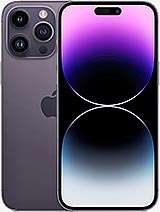
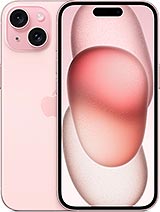
Apple iPhone 14 Pro Max • Apple iPhone 15 Pro
Outside Apple's walled garden is a world of capable and innovative smartphones. The Galaxy Z Fold5 and Z Flip5 are superb foldables - the former is suitable for power users, the latter - for those wanting superb pocketability. The Xiaomi 13 Ultra is the ultimate cameraphone, while the Sony Xperia 1 V offers the most customizable video capturing on a smartphone.
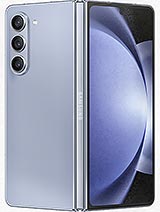
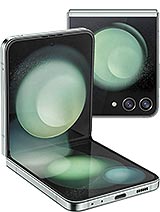
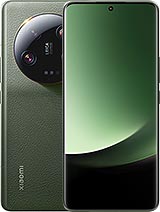

Samsung Galaxy Z Fold5 • Samsung Galaxy Z Flip5 • Xiaomi 13 Ultra • Sony Xperia 1 V
Our verdict
You wouldn't get the Apple iPhone 15 Pro Max for its Titanium frame. Its 5x telephoto camera and USB-C port are not features that will sell millions either. As for the console-level GPU, it will take time for that to be fully utilized by mobile game graphics.
Then why get the iPhone 15 Pro Max?
 White and Natural Titanium
White and Natural Titanium
The iPhone 15 Pro Max is worth getting for its well-rounded user experience, luxurious design, its premium services and warranty, for its clockwork iOS, and for its versatile camera experience with great photos and exceptional videos. And a thousand other little things we cannot fit into this verdict.
We doubt many iPhone 14 Pro/Max users will upgrade right away as the hardware improvements are mostly incremental. But it is a notable update over the 13 Pro Max and a major overhaul over the 12 Pro Max.
One of the biggest improvements targets videographers and will go under the radar for the masses. We are talking about capturing 4K60 ProRes videos straight onto an external SSD drive or memory card, which might open use cases and workflows that have never been possible before.
The new model delivers on most of its promises, even the carefully worded ones like performance improvements. The only potential issue that is unpredictable so far is thermal management. There are reports of overheating and/or severe throttling, though we couldn't replicate the chipset and charging overheating. Which does not mean they don't exist, of course.
Apple has never targeted the tech-savvy smartphones users with the iPhone and instead won their large base with consistent quality, a high level of service and convenience and (some) pro features. And the formula is still working, better than ever if you ask us.
So, should you get the new iPhone? It is the best iPhone ever made, you know. It has a stunning design, an outstanding display, great performance, impressive speakers, pro-grade cameras with a consistently good photo and class-leading video quality, long battery life and likable if weird iOS.
And even if there is a potential issue with performance and some image processing imperfections, it remains among the best smartphones on the market right now.

Yes, the iPhone 15 Pro Max is worth having in your pocket - it combines the best Apple has to offer in 2023, and it all works really well. And if it doesn't, Apple will fix it one way or another. Is it the best phone out there? No. Maybe? Yes! It depends on who you are and what you are looking for. If you are after the ultimate Apple experience, then it's a 100% Yes.
Pros
- Exquisite and now lighter design, water-resistant up to 6m deep.
- Outstanding OLED, super bright, color-accurate, Dolby Vision.
- Excellent battery life.
- Superb speaker loudness, balance, sound quality.
- Top-notch performance.
- Upgraded connectivity across the board, UWB2, too.
- Class-leading video capturing and stabilization, impressive Pro modes.
- Superb daylight and nighttime photos from all cameras.
- USB-C is here, and we love it.
- The best iPhone ever made, duh!
Cons
- No charger in the box.
- Apple's iOS restrictions can be off-putting to newcomers to the ecosystem.
- The GPU throttles under load to 50% of its max performance.
- The photo processing could benefit from less sharpening at times.
- Rear glass is much more shatter-prone.
from GSMArena.com - Latest articles https://ift.tt/hW28fY5
via IFTTT
Bagikan Berita Ini






































































































































































0 Response to "Apple iPhone 15 Pro Max review"
Post a Comment